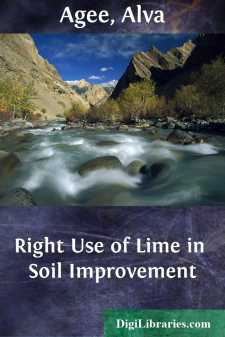Categories
- Antiques & Collectibles 13
- Architecture 36
- Art 48
- Bibles 22
- Biography & Autobiography 813
- Body, Mind & Spirit 142
- Business & Economics 28
- Children's Books 17
- Children's Fiction 14
- Computers 4
- Cooking 94
- Crafts & Hobbies 4
- Drama 346
- Education 46
- Family & Relationships 57
- Fiction 11829
- Games 19
- Gardening 17
- Health & Fitness 34
- History 1377
- House & Home 1
- Humor 147
- Juvenile Fiction 1873
- Juvenile Nonfiction 202
- Language Arts & Disciplines 88
- Law 16
- Literary Collections 686
- Literary Criticism 179
- Mathematics 13
- Medical 41
- Music 40
- Nature 179
- Non-Classifiable 1768
- Performing Arts 7
- Periodicals 1453
- Philosophy 64
- Photography 2
- Poetry 896
- Political Science 203
- Psychology 42
- Reference 154
- Religion 513
- Science 126
- Self-Help 84
- Social Science 81
- Sports & Recreation 34
- Study Aids 3
- Technology & Engineering 59
- Transportation 23
- Travel 463
- True Crime 29
Crops and Methods for Soil Improvement
by: Alva Agee
Categories:
Description:
Excerpt
INTRODUCTION
—This book is not a technical treatise and is designed only to point out the plain, every-day facts in the natural scheme of making and keeping soils productive. It is concerned with the crops, methods, and fertilizers that favor the soil. The viewpoint, all the time, is that of the practical man who wants cash compensation for the intelligent care he gives to his land. The farming that leads into debt, and not in the opposite direction, is poor farming, no matter how well the soil may prosper under such treatment. The maintenance and increase of soil fertility go hand in hand with permanent income for the owner when the science that relates to farming is rightly used. Experiment stations and practical farmers have developed a dependable science within recent years, and there is no jarring of observed facts when we get hold of the simple philosophy of it all.
—Nearly all profitable farming in this country is based upon the fundamental fact that our lands are storehouses of fertility, and that this reserve of power is essential to a successful agriculture. Most soils, no matter how unproductive their condition to-day, have natural strength that we take into account, either consciously or unconsciously. Some good farm methods came into use thousands of years ago. Experience led to their acceptance. They were adequate only because there was natural strength in the land. Nature stored plant-food in more or less inert form and, as availability has been gained, plants have grown. Our dependence continues.
—There are a few technical terms whose use cannot be evaded in the few chapters on the use of lime and fertilizers. A plant will not come to maturity unless it can obtain for its use combinations of ten chemical elements. Agricultural land and the air provide all these elements. If they were in abundance in available forms, there would be no serious soil fertility problem. Some of their names may not interest us. Six or seven of these elements are in such abundance that we do not consider them. A farmer may say that when a dairy cow has luxuriant blue-grass in June, and an abundance of pure water, her wants are fully met. He omits mention of the air because it is never lacking in the field. In the same way the land-owner may forget the necessity of any kind of plant-food in the soil except nitrogen, phosphoric acid, potash, and lime. Probably the lime is very rarely deficient as a food for plants, and will be considered later only as a means of making soils friendly to plant life.
Nitrogen, phosphoric acid, and potash are the three substances that may not be in available form in sufficient amount for a growing crop. The lack may be in all three, or in any two, or in any one, of these plant constituents. The natural strength of the soil includes the small percentage of these materials that may be available, and the relatively large stores that nature has placed in the land in inert form as a provision against waste....



